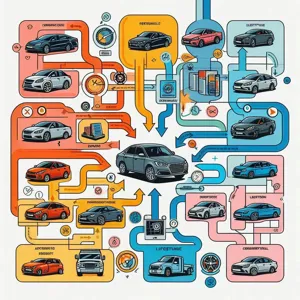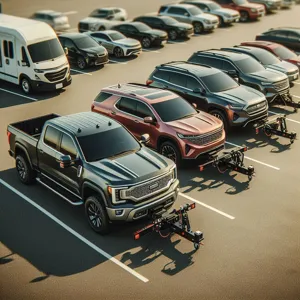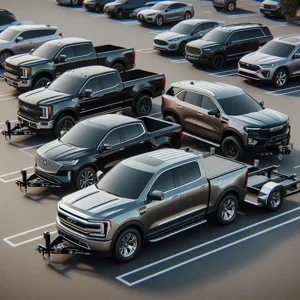Navigating college life often comes with its own set of challenges, and finding the right car should be at the top of your list when it comes to balancing budget and practicality.
With rising tuition costs and endless expenses, students need reliable transportation that won’t break the bank. Whether it’s commuting to classes, running errands, or embarking on weekend adventures, a budget-friendly car can make all the difference in enhancing the college experience. In this blog post, we’ll explore the top 10 budget-friendly cars that every college student should consider. From fuel efficiency and low maintenance costs to safety ratings and versatility, we’ll guide you through smart options that cater to your needs while keeping your wallet in check. Join us as we unveil the perfect rides that combine style, reliability, and affordability, ensuring you hit the road with confidence and ease during your college years!
1. Introduction: Why Budget-Friendly Cars Matter for College Students

As college life unfolds, students find themselves navigating a whirlwind of responsibilities, from attending lectures and cramming for exams to balancing part-time jobs and social events. Amidst this hectic schedule, one essential aspect often takes center stage: reliable transportation. For many college students, the dream of owning a car can quickly dissipate when faced with the realities of tuition fees, housing costs, and everyday expenses. This is where budget-friendly cars come into play.
Choosing a budget-friendly vehicle is not just about saving money; it’s about ensuring practicality and reliability during a pivotal time in life. These cars not only help students maintain their independence but also provide a sense of freedom to explore their surroundings. Whether it’s commuting to class, running errands, or embarking on weekend adventures, an affordable car can significantly enhance the overall college experience.
Moreover, budget-friendly cars often boast impressive fuel efficiency, helping students stretch their dollars even further. With rising gas prices and the need for cost-effective solutions, selecting a vehicle that delivers great mileage can alleviate financial stress. Additionally, many affordable models come equipped with essential safety features, ensuring that students can travel with peace of mind.
In this blog post, we will explore the top 10 budget-friendly cars that every college student should consider. Each option balances affordability with functionality, making them perfect companions for any student ready to conquer their college journey. Let’s dive into the world of budget-friendly vehicles that can make a significant difference in a student’s life!
2. Factors to Consider When Choosing a Budget-Friendly Car
When it comes to selecting a budget-friendly car, especially for college students navigating the demands of academia while managing their finances, several key factors come into play. Understanding these elements can help ensure that the chosen vehicle not only fits within a tight budget but also meets the unique lifestyle needs of a student.
**1. Fuel Efficiency:** With rising gas prices and the need for frequent commuting, fuel efficiency is paramount. Look for cars that provide excellent miles per gallon (MPG), helping to keep fuel expenses low. Compact cars and hybrids often shine in this category, offering a balance of performance and economy.
**2. Insurance Costs:** Insurance premiums can vary significantly between vehicles. As a college student, it’s vital to factor in the cost of insurance when budgeting for a car. Research different models to find those that typically enjoy lower insurance rates, and consider speaking with your insurance provider for estimates based on various options.
**3. Reliability:** College life can be hectic, and the last thing you want is to be stranded on the side of the road. Prioritize cars known for their reliability, so you can focus on your studies rather than unexpected repairs. Brands with solid reputations for durability often pay off in the long run.
**4. Maintenance Costs:** Some vehicles require more frequent repairs and maintenance than others. Before making a decision, assess the average maintenance costs associated with each car you’re considering. Opting for a model that’s easy and affordable to service can save you significant money over time.
**5. Resale Value:** While you might be focused on your immediate needs, it’s wise to consider the future. Some cars hold their value better than others, which can be beneficial when it’s time to sell or trade in your vehicle. Research models that have a good resale reputation to maximize your investment.
**6. Space and Practicality:** College students often juggle multiple responsibilities, from carrying textbooks and supplies to accommodating friends and luggage for weekend trips. Evaluate the space and practicality of each car. A hatchback or sedan with a spacious trunk may be ideal for those who require a bit more room.
**7. Technology and Features:** In today’s digital age, having a car equipped with modern technology can enhance your driving experience. Look for features like Bluetooth connectivity, smartphone integration, and safety tech that can make your daily commute more enjoyable and safer.
By weighing these factors thoughtfully, college students can find a budget-friendly car that not only aligns with their financial constraints but also supports their lifestyle and academic journey. Remember, the right choice can lead to a smoother college experience, allowing you to focus more on what truly matters—your education and personal growth.
3. Car #1: [Model Name] – Overview and Key Features

### Car #1: Honda Civic – Overview and Key Features
The Honda Civic has long been a favorite among college students, and for good reason. Renowned for its reliability, fuel efficiency, and impressive resale value, the Civic checks all the boxes for budget-conscious young adults. Its sleek design and sporty performance make it an attractive option without breaking the bank.
**Overview:**
The Honda Civic stands out not only for its reputation but also for the driving experience it offers. With a spacious interior and comfortable seating, it provides ample room for your textbooks, groceries, or even your friends on a weekend road trip. The Civic is available in various body styles, including sedan, coupe, and hatchback, allowing you to choose one that best fits your lifestyle and aesthetic preferences.
**Key Features:**
1. **Fuel Efficiency:** The Honda Civic boasts impressive fuel economy, averaging around 32-38 miles per gallon, making it an economical choice for students who are often on the go.
2. **Advanced Safety Features:** Equipped with Honda Sensing, a suite of safety technologies, the Civic includes features like adaptive cruise control, lane-keeping assist, and collision mitigation braking, ensuring peace of mind on the road.
3. **Tech-Friendly:** With a user-friendly infotainment system, the Civic comes with features like Apple CarPlay and Android Auto compatibility, making it easy to stay connected and entertained during your commute.
4. **Spacious Cargo Area:** The Civic offers ample trunk space, which is perfect for lugging around all your college essentials, from dorm supplies to sports gear.
5. **Resale Value:** Honda vehicles are known for their longevity and reliability, which translates into strong resale values. Investing in a Civic means that you can expect a good return when it’s time to upgrade.
In summary, the Honda Civic is more than just a car; it’s a reliable companion for your college journey. Its combination of practicality, safety, and style makes it a top contender for any student looking to navigate campus life without stretching their budget. Whether you’re heading to classes, running errands, or embarking on weekend adventures, the Civic is ready to take you there confidently and efficiently.
4. Car #2: [Model Name] – Overview and Key Features
### Car #2: Honda Civic – Overview and Key Features
The Honda Civic has long been a favorite among college students, and for good reason. Renowned for its reliability and fuel efficiency, the Civic offers an impressive blend of practicality and style that perfectly suits the needs of a busy student lifestyle. With a sleek design and a reputation for longevity, this compact car stands out not just in the parking lot but also in terms of performance and affordability.
**Overview:**
The Honda Civic is available in various body styles, including sedan, coupe, and hatchback, providing options to suit different preferences. Its budget-friendly price point, combined with Honda’s renowned reputation for quality, makes it an ideal choice for students who need a dependable vehicle without breaking the bank. The Civic is designed to handle both city driving and longer road trips, making it versatile for a range of activities, from commuting to class to weekend getaways.
**Key Features:**
1. **Fuel Efficiency:** The Civic boasts impressive fuel economy ratings, often exceeding 30 miles per gallon in the city and upwards of 40 on the highway—perfect for students looking to save on gas expenses.
2. **Spacious Interior:** Despite its compact size, the Civic offers a surprisingly roomy interior with comfortable seating for five. The trunk space is also generous, accommodating everything from textbooks to luggage.
3. **Advanced Technology:** Equipped with a user-friendly infotainment system, the Honda Civic includes features like smartphone integration, Bluetooth connectivity, and available navigation, ensuring that students stay connected and entertained on the go.
4. **Safety Ratings:** Safety is paramount, especially for college students driving around campus. The Civic consistently receives high safety ratings and comes with a suite of advanced safety features, including adaptive cruise control, lane-keeping assist, and collision mitigation braking.
5. **Resale Value:** Hondas are known for their excellent resale value, which is an important consideration for students planning to sell their car after graduation. The Civic holds its value well, making it a sound investment.
In summary, the Honda Civic is a standout option for college students seeking a budget-friendly vehicle. With its impressive fuel efficiency, spacious interior, advanced technology, and strong safety ratings, it’s a car that will not only meet your needs during college but also serve you well long after you toss your cap in the air.
5. Car #3: [Model Name] – Overview and Key Features

### 5. Car #3: Honda Civic – Overview and Key Features
The Honda Civic has long been a favorite among college students, and for good reason. This compact car strikes an impressive balance between affordability, reliability, and fuel efficiency, making it an ideal choice for students navigating tight budgets and busy schedules. With its sleek design and reputation for longevity, the Civic stands out as a smart investment for any student looking to make the most of their money.
**Overview:**
The Honda Civic is available in various trims, providing options that cater to different preferences and budgets. Whether you opt for the base model or the sportier variants, the Civic consistently offers a comfortable ride and engaging handling. Its spacious interior is equipped with ample legroom for both front and rear passengers, making it perfect for weekend getaways or late-night study sessions with friends.
**Key Features:**
1. **Fuel Efficiency:** One of the most attractive features of the Honda Civic is its impressive fuel economy, averaging around 30-40 miles per gallon, depending on the model year and driving conditions. This means fewer trips to the gas station and more money saved for textbooks or late-night pizza runs.
2. **Safety Ratings:** The Civic has consistently earned high safety ratings from organizations such as the National Highway Traffic Safety Administration (NHTSA) and the Insurance Institute for Highway Safety (IIHS). With features like advanced airbag systems, stability control, and available Honda Sensing technology—including adaptive cruise control and collision mitigation braking—students can feel secure on the road.
3. **Technology:** Equipped with a user-friendly infotainment system, the Civic comes with features like a touchscreen display, Bluetooth connectivity, and smartphone integration through Apple CarPlay and Android Auto. This means students can easily access navigation, music, and important calls while keeping their hands on the wheel and eyes on the road.
4. **Resale Value:** Honda vehicles are known for their excellent resale value, and the Civic is no exception. When the time comes to upgrade or sell, students can expect to recoup a significant portion of their initial investment, making it a financially sound choice.
5. **Customization Options:** For those looking to express their individuality, the Honda Civic offers a wide range of aftermarket accessories and modifications. From sporty rims to enhanced audio systems, students can personalize their vehicles to suit their style and preferences.
In summary, the Honda Civic is a top contender for college students seeking a dependable, economical, and stylish vehicle. Its blend of efficiency, safety, and modern features makes it well-suited for both campus life and everyday adventures. Whether you’re commuting to class or venturing out for a weekend road trip, the Civic is a reliable companion that won’t break the bank.
6. Car #4: [Model Name] – Overview and Key Features
### 6. Car #4: Honda Civic – Overview and Key Features
The Honda Civic has long been a staple in the world of budget-friendly vehicles, and for good reason. Renowned for its reliability and fuel efficiency, the Civic is an ideal companion for college students navigating campus life and beyond. This compact car combines practicality with a touch of style, making it a popular choice among young drivers.
**Overview:**
The latest Honda Civic boasts a sleek, modern design that stands out on the road. With a spacious interior and a well-thought-out layout, it comfortably accommodates both passengers and cargo—perfect for hauling textbooks, sports equipment, or weekend getaway luggage. The Civic’s reputation for longevity means that students can invest in a vehicle that will serve them well throughout their college years and beyond.
**Key Features:**
1. **Fuel Efficiency:** With an impressive fuel economy averaging around 30-36 mpg, the Civic helps students save money at the pump, allowing them to allocate their budgets to essentials like textbooks and dining out.
2. **Safety Ratings:** The Honda Civic consistently earns high marks in safety tests, providing peace of mind for students and their parents. Equipped with advanced safety features such as adaptive cruise control and lane-keeping assistance, it offers an added layer of protection on busy roads.
3. **User-Friendly Technology:** The Civic comes with an intuitive infotainment system that includes a touchscreen display, smartphone integration through Apple CarPlay and Android Auto, and Bluetooth connectivity. Students can easily access their favorite apps, music, and navigation while staying focused on the road.
4. **Spacious Interior:** With ample legroom and headroom for both front and rear passengers, the Civic is perfect for carpooling with friends or accommodating study groups. The versatile trunk space can easily handle a week’s worth of groceries or a large backpack.
5. **Resale Value:** Honda vehicles have a strong resale value, meaning that if students decide to sell or trade in their Civics after graduation, they can expect to get a good return on their investment.
In summary, the Honda Civic is not just a car; it’s a reliable partner for college life, making it an excellent choice for students looking for a budget-friendly vehicle that doesn’t skimp on features or performance. With its blend of efficiency, safety, and practicality, the Civic is a smart pick for anyone aiming to make the most of their college experience.
7. Car #5: [Model Name] – Overview and Key Features

### 7. Car #5: Honda Civic – Overview and Key Features
The Honda Civic has long been a favorite among college students, and for good reason. Renowned for its reliability and efficiency, this compact car strikes a perfect balance between practicality and style. The latest model sports a sleek design with a sporty edge, making it an appealing choice for the younger demographic.
Under the hood, the Honda Civic offers a range of engine options, including a fuel-efficient 2.0-liter 4-cylinder that provides a peppy driving experience without guzzling gas. With an impressive EPA rating of up to 36 miles per gallon on the highway, students can save money on fuel while enjoying a smooth ride to class or weekend adventures.
Inside, the Civic boasts a spacious and well-designed cabin, equipped with comfortable seating for up to five passengers. The user-friendly infotainment system features a 7-inch touchscreen, Apple CarPlay, and Android Auto compatibility, allowing students to seamlessly integrate their smartphones for navigation and entertainment. Furthermore, the Civic’s trunk space is generous, making it easy to haul books, groceries, or even luggage for a weekend getaway.
Safety is another hallmark of the Honda Civic, with an array of advanced safety features, including adaptive cruise control, lane-keeping assist, and collision mitigation braking. These technologies not only enhance the driving experience but also provide peace of mind for students navigating busy campuses and city streets.
In summary, the Honda Civic combines reliability, efficiency, and safety with a modern design, making it an ideal choice for budget-conscious college students who want a vehicle that can keep up with their active lifestyle. Whether you’re commuting to class or heading out for a weekend road trip, the Civic ensures a dependable and enjoyable driving experience.
8. Car #6: [Model Name] – Overview and Key Features
### Car #6: Honda Civic – Overview and Key Features
The Honda Civic has long been a staple in the compact car segment, and for good reason. Perfectly blending style, reliability, and practicality, the Civic is an ideal choice for college students looking to balance their budget without sacrificing quality. With its sleek design, the Civic stands out on campus, making a statement while still being easy on the wallet.
**Overview:**
The Honda Civic has evolved over the years, maintaining its reputation as a dependable vehicle that offers impressive fuel efficiency and a spacious interior. With its sporty exterior and comfortable seating, the Civic is as suitable for late-night study sessions at the library as it is for weekend road trips with friends.
**Key Features:**
1. **Fuel Efficiency:** The Civic boasts an impressive fuel economy, averaging around 30-36 miles per gallon, depending on the model year and engine choice. This means fewer trips to the gas station and more money in your pocket for textbooks and late-night snacks.
2. **Spacious Interior:** Despite its compact size, the Civic offers ample room for both passengers and cargo. The back seat is spacious enough for friends, and the trunk provides enough storage for everything from luggage to dorm essentials.
3. **Advanced Technology:** Equipping the Civic with features like a touchscreen infotainment system, Apple CarPlay, and Android Auto keeps you connected while on the go. Whether you’re listening to your favorite study playlist or navigating to your next class, the Civic’s tech-savvy features enhance the driving experience.
4. **Safety Ratings:** The Civic is renowned for its safety features, consistently receiving high ratings from organizations like the IIHS and NHTSA. With standard safety technologies like adaptive cruise control, lane-keeping assist, and collision mitigation braking, you can drive with peace of mind.
5. **Resale Value:** Honda vehicles are known for their longevity and resale value, making the Civic a smart investment for students who may want to sell or trade-in their car after graduation.
Overall, the Honda Civic is a well-rounded option that combines style, efficiency, and safety—making it a top contender for any college student searching for a budget-friendly vehicle that meets their diverse needs. Whether you’re navigating the hustle and bustle of campus life or heading out on an adventure, the Civic is ready to take you there.
9. Car #7: [Model Name] – Overview and Key Features
### Car #7: Honda Civic – Overview and Key Features
The Honda Civic has long been a favorite among college students for a multitude of reasons, making it a staple on any list of budget-friendly cars. Renowned for its reliability, fuel efficiency, and impressive resale value, the Civic strikes an ideal balance between performance and practicality, perfect for a student’s lifestyle.
**Overview:**
The Honda Civic stands out with its sleek design and sporty appearance, offering a sense of style without breaking the bank. Available in various trims, from the economical LX to the more feature-rich EX, students can choose the model that best fits their budget and needs. With a reputation for longevity, many Civics can be found on the used market at affordable prices, making it an accessible option for college students.
**Key Features:**
– **Fuel Efficiency:** One of the standout features of the Honda Civic is its exceptional fuel economy. With many models averaging around 30-36 miles per gallon, students can save significantly on gas while navigating campus and beyond.
– **Spacious Interior:** Despite its compact size, the Civic boasts a surprisingly roomy interior, providing ample space for friends, study materials, and weekend getaways. The rear seats offer generous legroom, making it comfortable for passengers on long drives.
– **Safety Ratings:** Honda places a strong emphasis on safety, and the Civic is no exception. It consistently earns high ratings in safety tests, equipped with features such as anti-lock brakes, multiple airbags, and stability control. Many newer models also come with advanced safety technologies like lane-keeping assist and adaptive cruise control.
– **Technology Integration:** The Civic is equipped with modern technology to keep students connected and entertained on the go. With features like a touchscreen infotainment system, Apple CarPlay, and Android Auto, students can easily access their favorite apps and music while driving.
– **Resale Value:** Investing in a Honda Civic is a wise choice for students, as it tends to retain its value well over time. This means that when it’s time to upgrade or sell, students can often recoup a significant portion of their investment.
In summary, the Honda Civic is a well-rounded vehicle that provides affordability, reliability, and a host of features that cater to the needs of college students. Whether commuting to classes or embarking on a road trip with friends, the Civic offers a dependable ride that won’t let you down.
10. Car #8: [Model Name] – Overview and Key Features
### 10. Car #8: Honda Civic – Overview and Key Features
When it comes to budget-friendly vehicles, the Honda Civic consistently stands out as a top choice for college students. Renowned for its reliability, fuel efficiency, and practicality, the Civic is a versatile compact car that can effortlessly adapt to the demands of student life. Whether you’re commuting to class, heading to a part-time job, or going on a weekend road trip with friends, the Civic delivers on all fronts.
One of the most appealing aspects of the Honda Civic is its fuel economy, with many models achieving upwards of 30 mpg in the city and 40 mpg on the highway. This means fewer stops at the gas station and more money left over for textbooks or late-night pizza runs. The Civic also boasts a spacious interior, offering comfortable seating for five and ample cargo space for everything from backpacks to groceries.
In terms of technology, the Honda Civic doesn’t skimp. Many newer models come equipped with a user-friendly infotainment system that features a touchscreen display, Bluetooth connectivity, and compatibility with both Apple CarPlay and Android Auto. This allows students to easily access their favorite apps, playlists, and navigation tools, keeping them connected while on the go.
Safety is another key feature of the Civic. With a solid reputation for crash test performance and an array of advanced safety features—such as adaptive cruise control, lane-keeping assist, and automatic emergency braking—the Honda Civic provides peace of mind for both students and their parents.
In summary, the Honda Civic combines efficiency, comfort, technology, and safety into one affordable package, making it an ideal companion for any college student looking to balance academic responsibilities with an active social life. With its strong resale value, investing in a Civic is not just a smart choice for your college years but also a wise long-term decision.
11. Car #9: [Model Name] – Overview and Key Features
### Car #9: Honda Civic – Overview and Key Features
The Honda Civic has long been a staple in the compact car market, and for good reason. Renowned for its reliability, fuel efficiency, and stylish design, the Civic is an excellent choice for college students seeking a budget-friendly vehicle that doesn’t compromise on quality.
**Overview**
The latest model of the Honda Civic boasts a sleek silhouette that exudes modernity while retaining the classic charm that has attracted generations of drivers. With an impressive lineup of trims, ranging from the well-equipped base model to the sportier variants, there’s a Civic for every taste and budget. Its spacious interior comfortably seats five, making it perfect for road trips with friends or hauling textbooks and supplies across campus. With a reputation for longevity, many Civic owners report reaching well over 200,000 miles with proper maintenance, making it a wise investment for students looking to maximize their budget.
**Key Features**
1. **Fuel Efficiency**: The Honda Civic excels in fuel economy, averaging around 30-36 miles per gallon depending on the engine choice. This means fewer trips to the gas station, allowing students to allocate more of their budget towards essentials like textbooks or late-night snacks.
2. **Advanced Safety Technology**: Safety is a paramount concern for college students and their families. The Civic comes equipped with Honda Sensing, a suite of advanced safety features that includes adaptive cruise control, lane-keeping assist, and collision mitigation braking, ensuring peace of mind on and off campus.
3. **User-Friendly Infotainment System**: Staying connected is crucial for today’s students. The Civic features a user-friendly infotainment system with a touchscreen display, Apple CarPlay, and Android Auto integration, allowing students to navigate, stream music, and stay in touch with friends effortlessly.
4. **Ample Cargo Space**: With a trunk capacity of 15.1 cubic feet, the Civic provides plenty of room for luggage, sports gear, or groceries, making it a versatile option for busy students balancing classes, work, and social life.
5. **Resale Value**: Honda Civics are known for holding their value well over time. For students who may want to sell or trade in their vehicle after graduation, the Civic’s strong resale value can be a significant financial advantage.
In summary, the Honda Civic stands out as a top choice for college students looking for a reliable, stylish, and budget-friendly car. With its blend of efficiency, safety, and practicality, it’s no wonder that the Civic continues to be a favorite on college campuses across the country.
12. Car #10: [Model Name] – Overview and Key Features
### Car #10: Honda Civic – Overview and Key Features
The Honda Civic has long been a favorite among college students, and for good reason. This compact car strikes an impressive balance between affordability, reliability, and style, making it a top contender for those navigating campus life on a budget. Available in various trims, the Civic caters to a wide range of preferences, whether you’re looking for a sporty hatchback or a more traditional sedan.
**Overview:**
The Honda Civic boasts a sleek and modern design that catches the eye while maintaining a practical edge. With a strong reputation for longevity and low maintenance costs, this car is a smart investment for students aiming to stretch their dollars further. The Civic’s fuel efficiency is another standout feature, offering an impressive average of up to 36 miles per gallon on the highway—perfect for commuting to classes or weekend road trips with friends.
**Key Features:**
1. **Spacious Interior:** Despite its compact size, the Civic provides ample legroom and cargo space, comfortably accommodating both passengers and belongings. The rear seats fold down, allowing for extra storage when needed—ideal for transporting dorm essentials or sports gear.
2. **Safety Ratings:** The Honda Civic consistently earns high safety ratings from organizations like the IIHS and NHTSA. With advanced safety features such as lane-keeping assist, adaptive cruise control, and collision mitigation braking, students can navigate busy campuses with peace of mind.
3. **Infotainment System:** The Civic comes equipped with a user-friendly infotainment system that includes a touchscreen display, Bluetooth connectivity, and smartphone integration through Apple CarPlay and Android Auto. This feature makes it easy to stay connected and enjoy your favorite playlists or podcasts while on the go.
4. **Fuel Efficiency:** With its economical engine options, the Honda Civic excels in fuel economy, allowing students to save money at the pump. Its hybrid variant is particularly appealing for those wanting to further reduce their environmental impact without sacrificing performance.
5. **Resale Value:** Honda vehicles are known for their strong resale value, and the Civic is no exception. This means that when it’s time to upgrade or sell, students can expect a favorable return on their initial investment.
In summary, the Honda Civic stands out as a top budget-friendly choice for college students looking for a reliable, stylish, and economical vehicle. With its blend of practicality and modern features, it’s no wonder the Civic remains a trusted companion for many navigating the challenges of student life.
13. Tips for Maintaining a Car on a Student Budget
Maintaining a car on a student budget can feel daunting, but with a bit of diligence and smart planning, it’s entirely feasible. Here are some essential tips to keep your vehicle running smoothly without breaking the bank.
**1. regular Maintenance:** One of the most effective ways to ensure your car remains reliable is to adhere to a regular maintenance schedule. This includes routine oil changes, tire rotations, and brake inspections. Many local auto shops offer student discounts, so don’t hesitate to ask!
**2. DIY Repairs:** Brush up on basic car maintenance skills. Learning how to change your own oil, replace air filters, or even change a tire can save you significant money. Plenty of online tutorials can guide you through these tasks, making the process less intimidating.
**3. Fuel Efficiency:** Choosing a budget-friendly car often means opting for one that is fuel-efficient. Additionally, consider using apps that track gas prices to find the cheapest fuel nearby. Maintaining proper tire pressure can also enhance fuel efficiency, helping you save at the pump.
**4. Car Insurance Savings:** Shop around for the best car insurance rates, as premiums can vary widely. Many companies offer discounts for students, especially for good grades. Increasing your deductible can also lower your monthly payment, but make sure you can afford the deductible in case of an accident.
**5. Budget for Unexpected Costs:** Set aside a small emergency fund specifically for car repairs. This can help you manage unexpected expenses like a flat tire or a dead battery without financial stress.
**6. Be Mindful of Mileage:** If possible, carpool with friends or use public transportation for shorter trips. This not only saves on gas but also minimizes wear and tear on your vehicle.
**7. Keep It Clean:** Regularly washing and waxing your car protects the paint and prevents rust, which can lead to costly repairs down the line. Plus, a clean car is much more pleasant to drive!
By incorporating these tips into your routine, you can effectively maintain your car while keeping expenses in check. A little proactive care can go a long way in ensuring that your vehicle remains a reliable companion throughout your college years.
14. Financing Options for College Students
When it comes to purchasing a car as a college student, understanding your financing options is crucial for making a smart, budget-friendly decision. With tight budgets and the ever-looming burden of student loans, finding a vehicle that fits within your financial constraints can feel daunting. However, there are several financing avenues available that can help you get behind the wheel without breaking the bank.
First and foremost, you can explore the option of student loans specifically designed for vehicle purchases. Some banks and credit unions offer personal loans with favorable terms for students, recognizing the unique financial challenges you face. Keep an eye out for lenders that provide low-interest rates or flexible repayment plans tailored to your situation.
Another option is to consider financing through the dealership. Many car dealerships offer financing plans for college students, often with incentives like cash rebates or deferred payment schedules. Be sure to read the fine print and understand the interest rates, as they can vary significantly between dealerships.
leasing is also worth considering. While it’s not a purchase, leasing a car allows you to drive a new vehicle with lower monthly payments than traditional financing. This can be particularly appealing if you’re looking for something reliable without the long-term commitment of ownership. Just remember that mileage limits apply, so if you plan to take road trips or have a long commute, this might not be the best fit.
Lastly, don’t underestimate the power of asking for help. Many parents or guardians may be willing to co-sign a loan or help you navigate financing options. Having a co-signer with a good credit score can open doors to better financing deals, making it easier for you to secure a loan with favorable terms.
In summary, as a college student, it’s essential to explore all available financing options—be it through student loans, dealership financing, leasing, or seeking support from family. By doing your homework and carefully considering your choices, you can find a budget-friendly car that fits both your lifestyle and your wallet.
15. Conclusion: Making the Right Choice for Your College Journey
When it comes to navigating the bustling world of college, making the right choice in a vehicle can significantly impact your experience. As you wrap up your search for budget-friendly cars, remember that the ideal vehicle goes beyond just affordability; it should align with your lifestyle, meet your practical needs, and suit your personal preferences.
Consider factors like fuel efficiency, maintenance costs, and reliability, as these elements will play a crucial role in your day-to-day life. A compact car might be perfect for weaving through tight campus parking, while a hatchback could offer the extra space you need for weekend getaways or hauling groceries. Additionally, durability is essential; a dependable car will give you peace of mind as you juggle classes, extracurricular activities, and maybe even a part-time job.
Ultimately, the right car can enhance your college journey, providing you with the freedom to explore, the convenience of transport, and the ability to create unforgettable memories. Whether you opt for a tried-and-true favorite like a Honda Civic or a more quirky choice like a Subaru, ensure it resonates with your lifestyle and budget. Remember, this isn’t just a purchase; it’s an investment in your college experience. Choose wisely, and you’ll find yourself driving not just a car, but a vital companion on your path to success.
In conclusion, choosing the right car as a college student isn’t just about getting from point A to point B; it’s about finding a reliable companion that fits your budget and lifestyle. Our list of the top 10 budget-friendly cars highlights options that offer a perfect blend of affordability, fuel efficiency, and practicality, ensuring you can navigate campus life and beyond without financial strain. Whether you prioritize style, space, or tech features, there’s a car on this list that will meet your needs while allowing you to focus on your studies and enjoy your college experience. We hope you feel empowered to explore these options and find the perfect vehicle that will accompany you on countless adventures. Safe travels and happy driving!




































